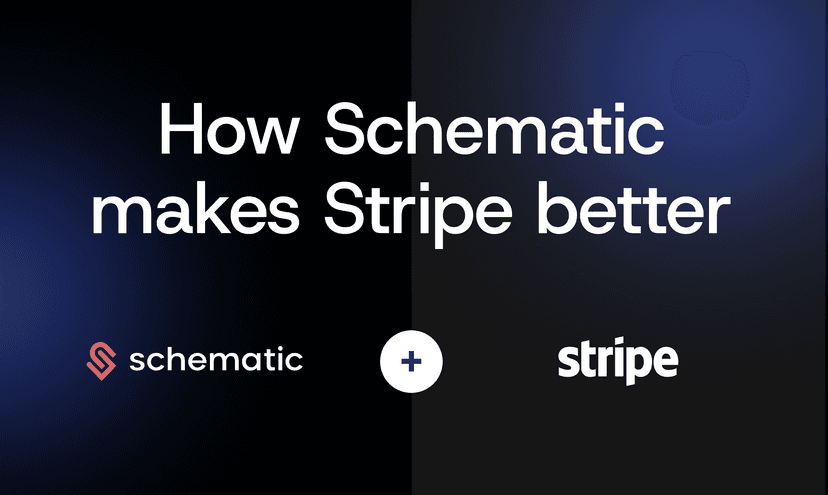

Stripe has been expanding Billing to handle more complex pricing models. For a long time, subscription billing, seat-based models, and simple usage tracking covered most SaaS needs. But with the rise of AI-powered products, where value is tied to compute, tokens, or API calls, teams have been asking for more flexibility.
Stripe’s advanced billing features (currently in preview) are a direct response to that demand. They bring more power to usage-based pricing and are a welcome step forward for developers trying to scale modern products.
Stripe’s new billing features introduce several important capabilities beyond what its standard billing model offers:
Multi-dimensional usage metering — the ability to track multiple usage metrics per customer (e.g., API calls and GPU minutes).
Tiered and dynamic rate configuration — more flexible ways to define thresholds and discounts as usage scales.
Credit burndown and automated issuance — letting companies create prepaid credit systems that decrement with use.
Price versioning and rollout — the option to evolve pricing and migrate customers to new rate cards without manual work.
All of these features are aimed at making it easier for teams to express complex pricing models directly in Stripe, without maintaining a separate metering service or heavy custom logic (e.g. Orb or Metronome).
These are meaningful improvements to Stripe’s billing foundation. But at Schematic, we’ve seen firsthand that teams building fast-moving products still the everyday realities of billing operations — enforcing limits, surfacing usage, and updating pricing without a deploy.
At Schematic, we work with fast moving teams building SaaS and AI products that evolve quickly. These companies often have the same experience: Stripe handles the financial side well, but product-level monetization logic still needs another layer.
1. Runtime enforcement and visibility
Stripe is designed to meter and invoice usage, not to enforce it in real time. Most teams still write their own logic to check whether a user has remaining credits, display current usage in the UI, or block requests that exceed plan limits. That’s manageable at small scale, but becomes difficult when you have multiple metered features, trial allowances, or dynamic upgrades.
2. Plan iteration that reaches the product
Stripe’s new pricing versioning helps finance and operations teams adjust rates. However, those changes don’t automatically propagate to in-app elements—like pricing tables, upgrade prompts, or feature gates. Product teams still need to coordinate with engineering to ensure pricing logic and UI are aligned, which can slow iteration.
3. Cross-feature credit and limit management
Stripe’s new Advanced Billing features improve the experience for implementing self-serve plans. But sales-led deals often require one-off terms like custom limits, bundled credits, or feature exceptions. These often don’t fit cleanly into standard prices and plans, requiring manual management or ad-hoc code. Schematic gives teams a structured way to model and enforce those variations without custom logic for each customer.
Schematic complements Stripe by handling the runtime and product-side aspects of monetization while keeping Stripe as the system of record for payments, invoicing, and reporting.
Capability | Stripe Advanced Billing | Schematic |
Payments & invoicing | ✅ Reliable, global infrastructure | ✅ Integrates directly with Stripe |
Usage metering | ✅ Metering and Credit Burndown | ✅ Tied to plan logic (e.g. soft/hard limits, per-customer exceptions) |
Credit burndown | ⚙️ Per-meter (preview) | ✅ Unified balance across features with grants & promos |
Runtime enforcement | ❌ Product logic required | ✅ SDK and Featuer Flags for in-app limit checks |
Pricing iteration | ⚙️ Versioning & rollout | ✅ No-deploy edits reflected in UI and enforcement |
Upgrade prompts | ❌ Custom implementation | ✅ Built-in components guide users at limit events |
The combination lets teams keep financial operations and customer billing in Stripe, while Schematic manages what customers can do in-product—how much they’ve used, what’s unlocked, and when they see an upgrade path.
In production, the pattern usually looks like this:
Stripe handles payments, invoices, and revenue recognition.
Schematic manages product entitlements, usage tracking, and credit balances inside the app.
Events stay in sync: Schematic updates Stripe with metered usage and plan data so invoices and dashboards stay accurate.
When a pricing change happens in Schematic, it automatically reflects in both the app experience and Stripe’s records. No code changes or redeploys are required, which helps product and growth teams iterate faster while keeping finance confident that everything reconciles correctly.
Stripe’s Advanced Billing is a big step forward and makes usage-based pricing far easier to implement. It gives teams a solid foundation for metering, credits, and complex pricing. But for AI and other fast-moving products, that foundation isn’t quite enough on its own. They also need pricing logic that lives inside the product — real-time enforcement, shared limits, and upgrade paths that evolve as quickly as the features themselves.
That’s where Schematic comes in. Stripe handles billing and payments; Schematic connects those plans to how the product actually behaves.